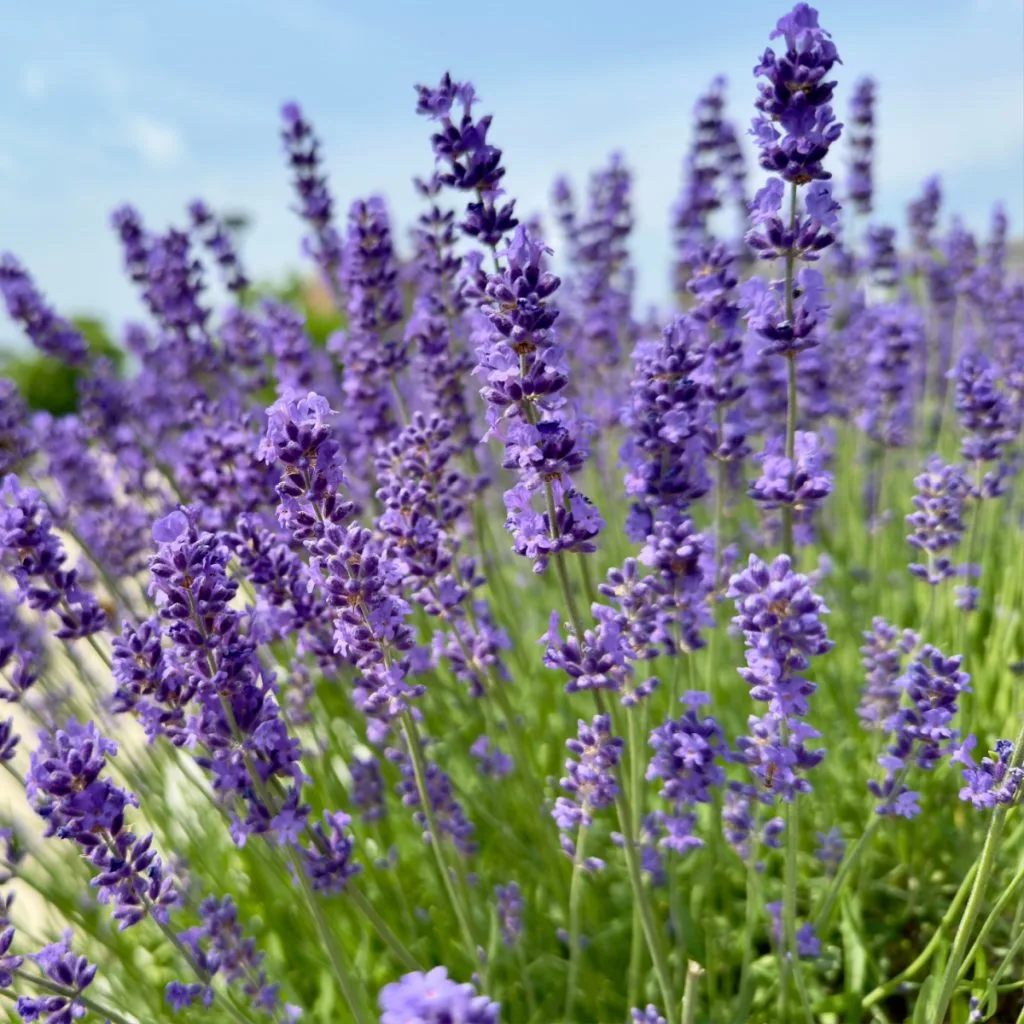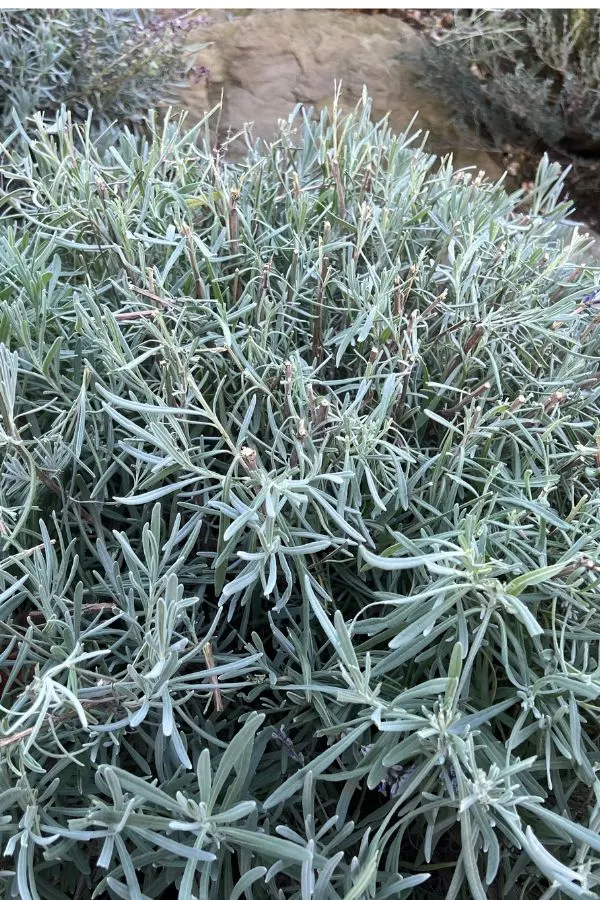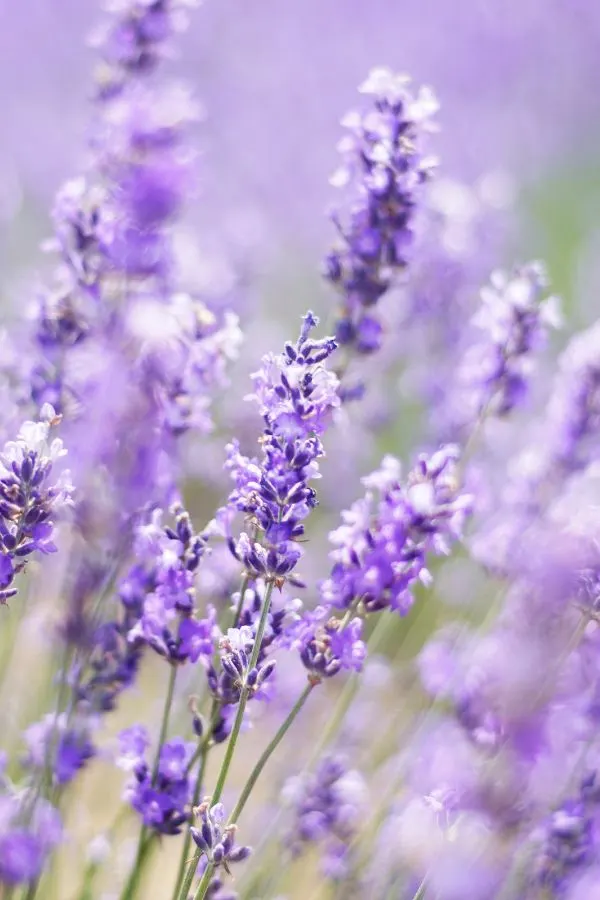Wondering what to do with your lavender after it stops blooming?
One thing is for sure, lavender is a tough and hardy perennial. But let’s face it, lavender is at its best when it is well-shaped, healthy and in full bloom. And that is exactly why it’s important to know how to care for this hardy perennial once its blooms begin to show the first signs of fading – or if the plant has become overgrown and woody.
Here’s the good news – believe it or not – with just the most basic of care, not only can you help to keep perennial lavender healthy and thriving after it flowers – you can also get it to bloom again!

What To Do After Lavender Stops Blooming
Encouraging A Second Bloom
If your lavender plant is fairly young or in good, healthy shape, there are a couple of quick and easy ways to encourage it to have a second round of flowering before the season comes to an end. But the key is to act fast!
Once you notice the first round of blooms beginning to lose color, remove the faded flowers. This is known as deadheading and is by far the best way to encourage more blooms.
By deadheading old blooms off as they fade, you prevent the plant from wasting energy on old blooms. And without old blooms to try to heal, the plant can then focus on generating new flower buds. To deadhead, simply snip off the old bloom by cutting just above the first set of healthy leaves.
By not taking too much off of the plant, it can quickly begin to work on producing a new bloom set. Sometimes, if your lavender plant has grown too big and woody, more severe pruning may be necessary after it blooms.
Dealing With Older / Overgrown Lavender Plants
Taking care of your lavender plants as they grow larger over time will play a crucial part in not just their overall health but also in how often and how vivid they will bloom. Without occasional deeper pruning and trimming back, lavender plants will become woody and overgrown.
When perennial lavender becomes too big, the stems start to become lengthy and split. Eventually, they become longer and heavier as they grow and the plant loses it luster. So much so that it can make it seem completely unrecognizable as lavender.
When a plant becomes woody, it will severely impact its blooming ability. If this occurs, it’s time for major pruning. So when is the best time for more severe pruning? Typically, late summer or early fall is the prime time to prune.
This is the ideal time to cut back because it allows for better blooming next year. By pruning in late summer and fall, the plant has time to recover. Come spring, it is ready to grow and bloom in full!
How To Prune Lavender In Late Summer After It Stops Blooming
Once your lavender has reached full bloom in the summer, check the plant’s interior structure. If you see any lengthening of gray woody stems towards the base, or any loss of vivid color at the top of the flowers, it’s time to grab the shears for a bigger pruning effort.
Before you begin, it’s important to know what not to do. Avoid cutting all the way down to the wood stems. This will damage the plant and prevent any potential for a fuller bloom. Specifically, it’s best to cut 2-3 inches above the wood stem.

Leaving some leafy green stems helps keep the plant healthy and ready to flourish. If the plant is severely overgrown, you can cut back more. But realize when you do, it will take a bit more time to recover for blooming. Sometimes, with overly large plants, it’s unfortunately a must to get them back in shape.
Shaping Lavender
As you start shaping the lavender, you can cut it a couple of ways that will complement its growth. For potted plants and for smaller flower beds, you can go for a more compact rounded shape. This allows for blooms to be more controlled to compliment other perennials growing nearby.
In larger areas where the lavender has space to fill in, keep the pruning more centered on topping the plants back to keep them vibrant. This will allow for larger bloom stems to fill big areas with color.
The biggest key of all with lavender is no matter where it grows always be sure to deadhead those old blooms quickly and prune and shape lightly each time. It will keep plants in great shape – all while keeping the possibility alive for more rounds of blooms to form all summer long.
Don’t Fertilize Lavender After It Stops Blooming
One thing you won’t need to do to your lavender to help it bloom again in the summer is fertilize it with heavy nutrients. In fact, lavender does not respond well at all to soil with too much power. But what will help to encourage more blooming is to mulch the plant’s base with a bit of compost after deadheading.
Compost is all natural and organic. It will not overpower the lavender but instead give it a small dose of energy to keep it growing healthy and strong. After applying the compost, water your plants as well to help the low and slow energy get to their roots
After that, go easy on the watering. A bit of watering during dry periods can help it produce new blooms. But be careful to not overdo it. Too much water will slow lavender’s growth and bloom set. It can also even cause it to rot out at the base.
Finally, if growing lavender in pots, be sure to keep your pots in an area where they will receive full sunlight. At least 6 six to eight hours of direct sunlight daily is a must for plants to bloom again. Often, potted lavender is placed in too much shade, which will prevent a second bloom. See: Potting Perennials – How To Create Amazing Planters That Last!
Here is to taking care of your lavender and getting more blooms than ever this growing season! Happy Gardening, Jim & Mary.
Old World Garden Farms
Jim and Mary Competti have been writing gardening, DIY and recipe articles and books for over 15 years from their 46 acre Ohio farm. The two are frequent speakers on all things gardening and love to travel in their spare time.
As always, feel free to email us at thefarm@owgarden.com with comments, questions, or to simply say hello! You can sign up for our free email list in the subscribe now box in the middle of this article. Follow us on Facebook here : Owg facebook. This article may contain affiliate links.



